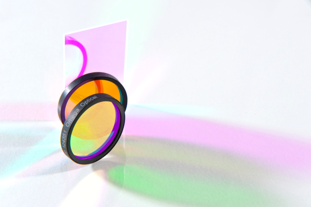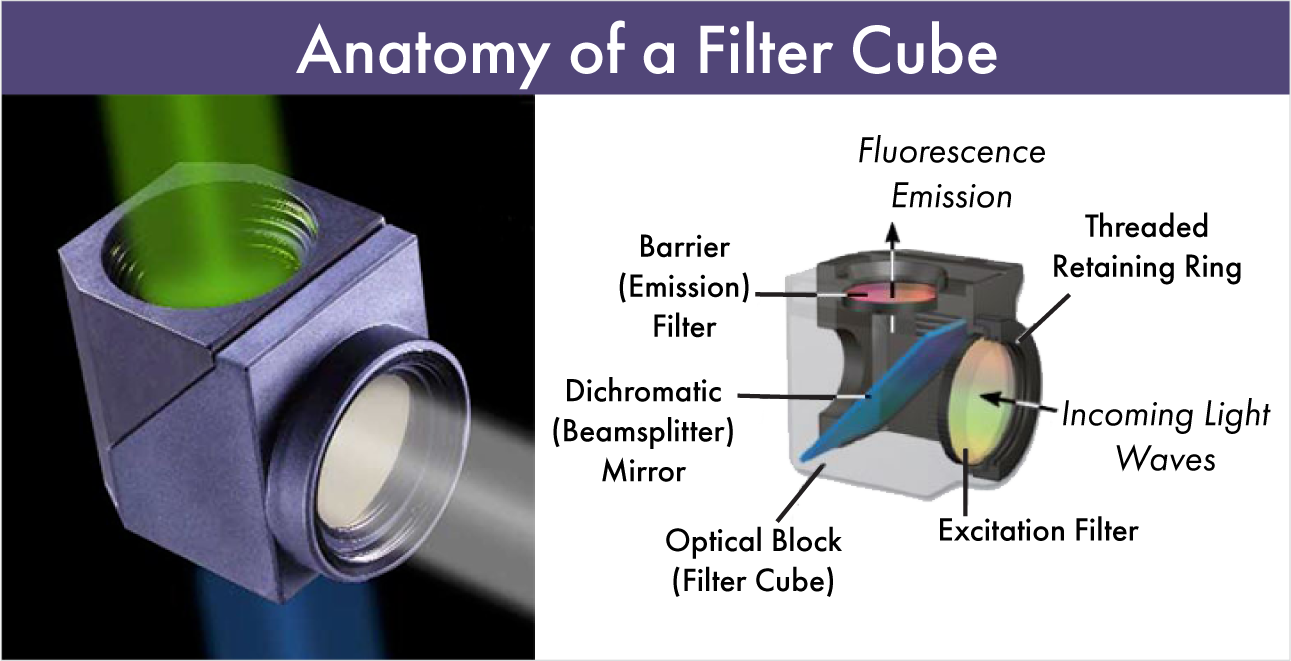
At Omega Optical, we supply a range of precision filters and dichroic mirrors designed exclusively for flow cytometers. In this blog post, we’ll explore the basic working principles of flow cytometry to explain how our optics are increasingly important for high throughput, multiplexed flow cytometry.
Flow Cytometry: Fluidics
All flow cytometers are based on central fluidics systems known as flow cells which contain a continuous liquid stream traveling through the cytometer. Samples in suspension are injected into the center of the sheath fluid as it passes through the nozzle which ‘focuses’ the liquid stream according to the cells’ hydrodynamic radii. This causes them to flow through the system in single file.
At the heart of the flow cytometer is a laser, or multiple lasers, that is/are pointed through the liquid stream. Several different optical detectors obtain the signals generated by light interacting with the flowing cells. These include forward scattered and side scattered light, alongside characteristic fluorescence.
Measuring Scattered Light & Fluorescence
One cell at a time, the sample suspension passes through the laser/s and alters the beam. Scattered light indicates the granularity and size of the cell. Forward-scattered light, sometimes abbreviated to FSC, represents the cell-surface area or overall size. Side-scattered light, or SSC, provides information about the cell’s internal composition and structure. Fluorophores bound to labeled cells will also fluoresce when excited by incoming laser light. Each of these signals is generated simultaneously, providing rich detail about the cellular population, cell size, composition, and structure.
If you would like to learn more about the optimal filter layout, take a look at our flow cytometry application page
Engineers continue to push the boundaries of possibility in flow cytometry through multicolor detection. Fluorophores are sensitive to specific wavelengths of light, emitting characteristic signals when excited by specific wavelengths. For example, dyes based on fluorescein (FITC) have excitation and emission peak wavelengths in the region of 495 and 519 nanometres (nm). Using one laser and a single fluorescent reagent only gives limited insights into the type of cells within a population.
In a multichannel system, cell suspensions are stained with multiple fluorescent dyes and the flow cell is intersected with a sequence of laser beams. Precision optical filters designed to acquire signals of specific spectral bandwidths while avoiding cross-talk between channels are absolutely essential. Further to that, flow cytometry is rapidly moving into the realms of big data, leaving traditional histograms and scatter graphs behind in favor of advanced data analysis and visualization software - though this deserves an article of its own to fully do the subject justice.
Contact us today if you would like to learn more about our range of dichroic filters and mirrors for flow cytometers.

